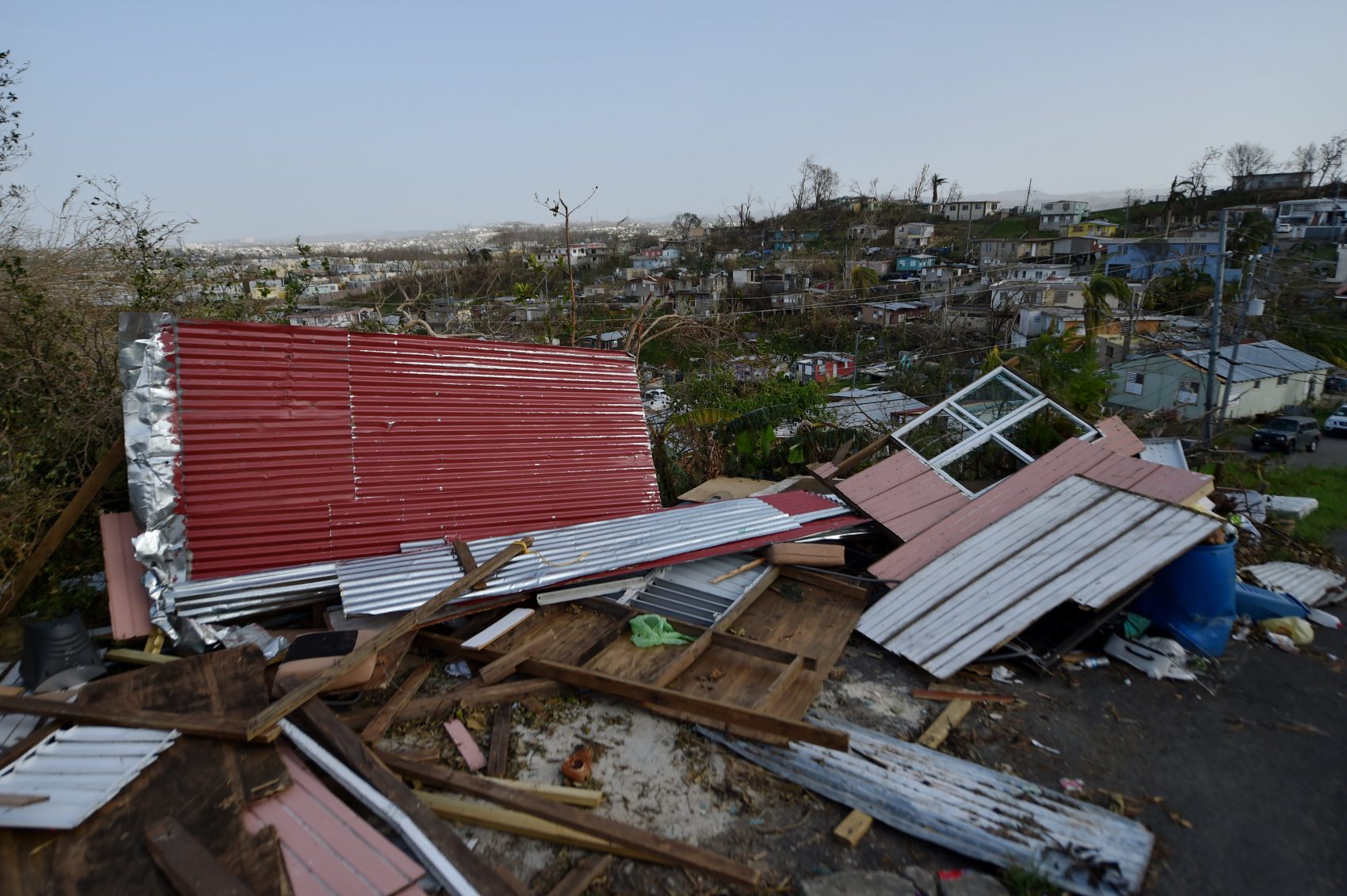Advertisement
How The Caribbean's Colonial History Shapes Hurricane Recovery

The Caribbean islands of Barbuda, Dominica, St. John, St. Croix and Puerto Rico are recovering from the devastation of hurricanes Maria and Irma. The Caribbean was once a crossroads of trade and colonialism, and that history continues to shape the islands today — even during the recovery effort.
Here & Now's Jeremy Hobson speaks with Ernesto Bassi (@ErnestoBassi), assistant professor of history at Cornell University.
Interview Highlights
On the origins of human civilization in the Caribbean
"We can go back about 7,000 years when the first humans entered the Caribbean islands. They entered from northeastern South America, from Venezuela through Trinidad. The standard account speaks of two groups: the Caribs and the Arawaks, or the Caribs and the Taínos. Supposedly the Caribs were chasing the Taínos. By the time of the arrival of the Spaniards, they were settled in the larger islands of Cuba, Jamaica and Hispaniola, which today is Santo Domingo, the Dominican Republic and Haiti. The Caribs were sort of settled in what are called now the Lesser Antilles, this small chain of islands east of Puerto Rico, south to the coast of Venezuela. So, at the time of the arrival of the Spaniards, these two groups are in conflict, and of course the consequences of the encounter or the arrival of the Spaniards can be described as a sort of cataclysmic collapse, because of both slavery and this is the introduction of new diseases from Europe to the America to the Caribbean played definitely a huge role in the near complete extinction of the indigenous populations of the Caribbean."
On further colonization of the Caribbean
"The Spaniards arrived, as we all know, in 1492. Then the Spaniards are sort of establishing bases in the Caribbean, looking for wealth. There is not much in the form of precious metals in the Caribbean. In places like today's Peru and Mexico, the Spainards actually found precious metals in great amounts, which led them to sort of abandon huge chunks of the Caribbean. Actually, they called the smaller islands the 'islas inútiles,' the useless islands, which some historians have interpreted as meaning that they were useless or less useful to Spaniards because there were no riches to be exploited in these islands."
On slavery in the Caribbean
"There were slave raids to these smaller islands from which indigenous slaves were taken not only to the larger islands like Cuba, but also to the continent. But in the aftermath of this, the Spanish turned to the continent. A number of smaller islands were left semi-abandoned and they offered a good entry point for other Europeans like the English, like the Dutch, like the French, who first entered the Caribbean as pirates, basically. These other European empires, these other European powers gradually shifted to agriculture. Sugar, which came to the Americas with Columbus, slowly, gradually emerged as the main crop to be produced in the Caribbean, and the rise of sugar is very much associated with the massive introduction of enslaved populations from Africa."
"With the aftermath of Hurricane Maria in Puerto Rico, Puerto Rico is not the owner of its own destiny in terms of acting to help itself."
Ernesto Bassi
On U.S. involvement in the Caribbean
"After the U.S. becomes independent, the idea of the U.S. westward expansion, there was a chance for this U.S. expansion to have taken place toward the Caribbean. Talk of annexing Cuba was constant and somewhat important during the 19th century. Actually toward the end of the 19th century, when Cuba becomes independent, it doesn't become fully independent. It actually shifts from becoming a Spanish colony to becoming a U.S. neo-colony of sorts. The U.S. officially occupies Cuba for five years or so between 1898 and 1902, and then through a constitutional amendment, called the Platt Amendment, an amendment to the constitution of Cuba, the U.S. reserves the right to intervene in Cuba. Out of that amendment, the Platt Amendment, the U.S. gets a possession in Cuba that it still has, the possession of Guantanamo. Similarly, Puerto Rico doesn't really become independent after it becomes independent from Spain. It becomes a U.S. territory."
On determining which islands have ended up in the best situations given this historical context
"It can be hard to tell. It's easy to say that it is better to be independent than to be dependent on a foreign power. It is actually not clear, and you can see that it's not clear places like the French overseas territories of Guadeloupe and Martinique, where, despite the existence of a pro-independence movement, it is clear that the population doesn't want to be become an independent country. Something very similar happens in Puerto Rico, right? Puerto Ricans are American citizens without direct representation in Congress. And although there exists a pro-independence movement in Puerto Rico, it has never reached the sufficient strength to actually push for independence. On the other hand, as we are seeing now, with the aftermath of Hurricane Maria in Puerto Rico, Puerto Rico is not the owner of its own destiny in terms of acting to help itself. Puerto Rico does not have a government that can make decisions about how to approach these crises."
This article was originally published on September 27, 2017.
This segment aired on September 27, 2017.